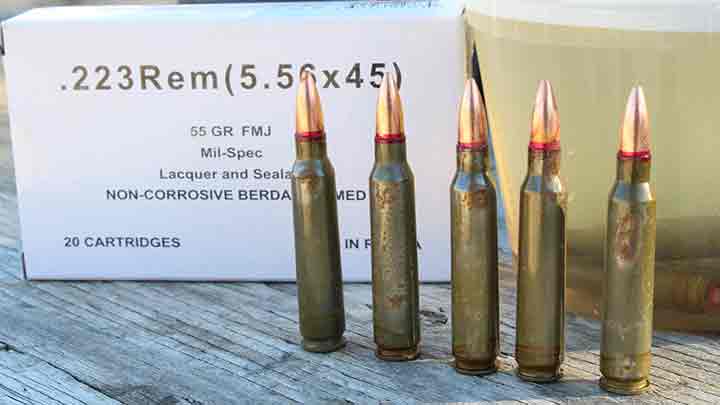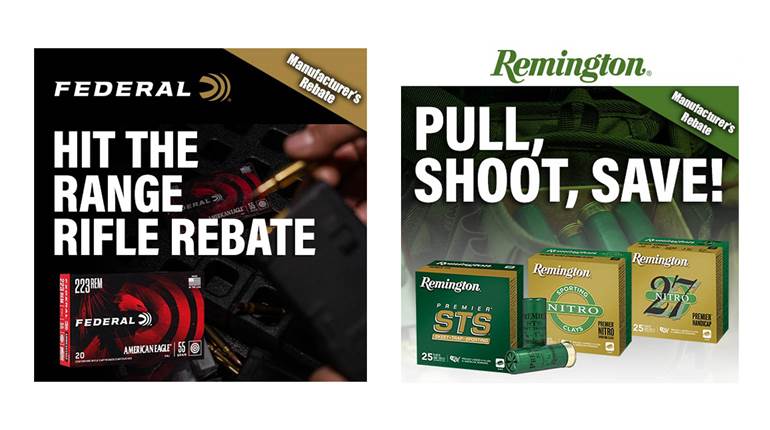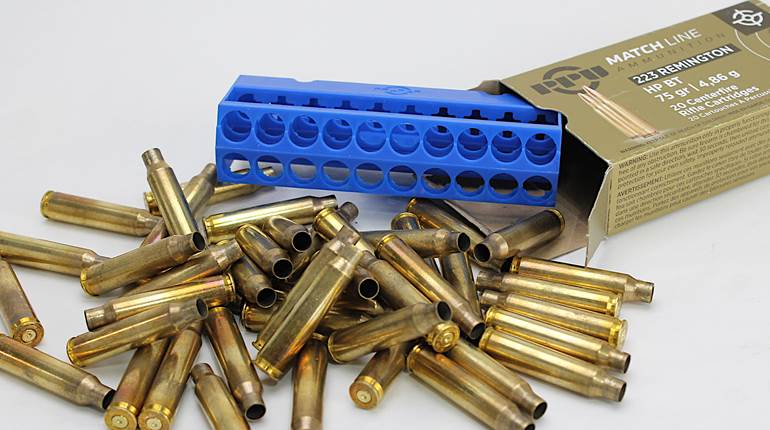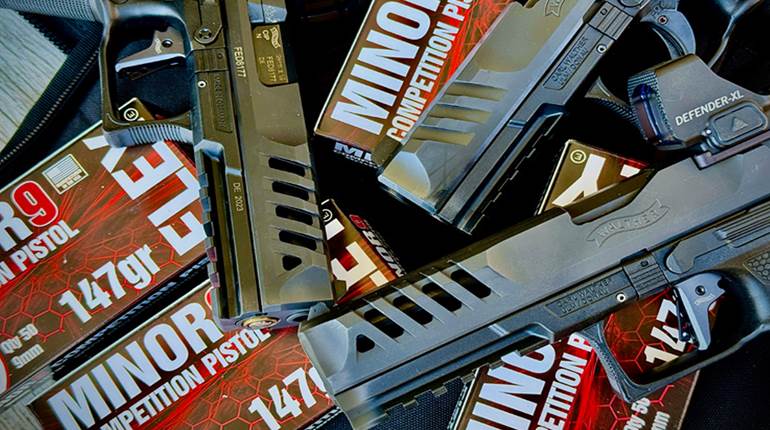
Most of us have heard a variation of what I like to call the “Uncle Johnny story.” You know, the uncle in Vietnam that tossed that early jam-o-matic M-16 for an AK-47 that he found completely submerged in the rice paddy. This story seems to have circulated the firearms community for as long as both of these firearms have been in service, and with all the chaos and confusion during that conflict, I would bet it happened at least once.
Although, what I wonder is, “How long was that rifle underwater?” Based on my experience with the Kalashnikov, I wholeheartedly believe that this machine can survive almost indefinitely underwater and still function, especially if we are talking about freshwater. However, what about the ammunition? How waterproof is it really?

I’ve had rounds still fire after being on my hip during a torrential downpour and even complete success out of those that spent a weekend in a wet range bag, but how about after being totally submerged? The only way to find out is to conduct a controlled experiment. With that, I decided to submerge three different types of 5.56x45 mm NATO ammunition in tap water and fire them at different intervals.
The rounds consisted of Barnaul lacquer-coated, steel-case ammunition that featured both a sealed bullet and primer, Federal’s American Eagle brass-cased ammunition that featured a sealed primer and Wolf Polyformance ammunition that featured a polymer coating on the case, but both the primer and bullet were unsealed. I felt these three rounds represented the different levels of waterproofing on the market, so into the drink they went.
Test Day One: +48 hours
My first interval was at 48 hours. I figured after, two full days, we would start to see some seepage and have at least a squib load from the rounds that underwent the least amount of waterproofing. The first tested were the Wolf Performamce. Before inserting them into a magazine, I rolled the rounds across a rag to remove any excess water but nothing further to dry them out.
Water inside the case is marginally dangerous, however water outside of the case can be extremely dangerous if it increases chamber pressure. Although the rounds were already showing corrosion at this point, all five fired and cycled without issue. Up next was the Federal American Eagle. Don't believe internet hype, brass can indeed corrode. We saw light corrosion on these rounds, but it wasn't much more than a surface blemish and only on one cartridge.

Federal’s signature blue-primer sealant was still intact so I was confident that the rounds would function, especially since the steel rounds before it did so well. I was right, again five for five, and they locked the bolt on the last round. The last round of the day was the fully-sealed Barnaul. I was most interested in these results because this ammunition best resembles what would have been inside of those AK magazines during the Vietnam War.
Surprisingly, this was the round that showed the most corrosion, despite being built specifically to resist it. It seems that the invention of polymer-coated ammunition not only solved the age-old argument of whether or not lacquer melts off during use, but also if it does a better job of waterproofing. Again, we achieved a 100% success rate from our five-round sample.
Test Day Two: +4 Days, 8 Hours
If all of these different types of ammunition survived two days underwater, certainly after four days, we should see some corrosion, right? My second test session also started off with the Wolf Polyformance. At this point, nearly all of the polymer coating has washed off, which is interesting, as this indicates that the polymer is water-based.
Now that the coating was off, the rounds exhibited minor corrosion which was mostly limited to the case mouth. None the less, all five fired and displayed standard operating pressures. Next, I prepared five rounds of the fully-sealed Barnaul ammunition that soaked for more than half of a week. These still had the same amount of lacquer on them, however we noticed bits of the red sealant floating through the water.

Despite the loss of some of the sealant, all five fired and functioned as if they were stored in the driest of locations. Inspection of the fired cases confirmed that they were structurally sound as well. I finished test day two with the American Eagle rounds. At this point, the water was still about as clear as the day we poured it with just a hint of cloudiness.
All ammunition look good, and we didn't witness any corrosion, except for the one round that we found on the previous test day. However, the pocket primer sealant was starting to erode slightly. I stuffed the mag with another sample of five and still felt very confident that they would fire. The ammunition didn't let me down as we watched a stream of brass float through the air.
Test Day Three: +8 Days, 6 Hours
Being that two and even four days didn’t destroy a single round, I decided to extend the next test interval. After more than a full week, I arrived at the range and started my testing with the Federal Brass-cased fodder. These rounds looked about the same as last time, except slightly more primer sealant was missing. Although they appeared slightly compromised, they certainly weren’t as again all five fed, fired and ejected.

By now, the Wolf ammunition was looking pretty rough. There was almost no polymer left, and the water was reminiscent of a minestrone soup. Needless to say, the cases were starting to show significant corrosion. That corrosion was enough to let some moisture into the case because we experienced a bit of weak cycling and the failure to go into bolt-lock on the last round. Finally, we were getting somewhere!
The range day ended with the Barnaul rounds. The bullet and primer sealant was still intact, and it looked like all that was going to flake off had already gone. Although the primer and bullet were in good shape, the cases were starting to deteriorate. There was rust that couldn't be rubbed off with a towel, which is significant when determining metallic damage. I considered using these rounds too borderline dangerous and fired the five-round sample with a lanyard, as I was expecting a case rupture. I wasn’t surprised when all five fired but I was surprised that the cased stayed together during the process.
Test Day Three: +14 Days, 5 Hours
After three attempts to “ruin” ammunition, I was left with my last five rounds of each type. Be that as it may, I opted to wait an entire fortnight before my last test. I started with what looked to be the safest: the brass-cased Federal ammunition. These rounds looked exactly the same as the test day before; even the sealant hadn’t washed off any further. Ultimately, if I dried it out and put it back into its box, you wouldn't have known it had been sitting underwater for two weeks. Given its history, I wasn't expecting any issues, and the ammunition didn't let me down, as all five went off without a hiccup.

I followed these with the unsealed steel-cased Wolf cartridges. By now, not only had all of the polymer dissolved, but the cases were rusting and developed deep-green corrosion in some places. I believe that this was from the oxidation of the copper jacket that was re-deposited onto the steel. The rounds were structurally sound, so I continued the testing. They all fired, but again didn’t cycle the gun hard enough to lock it open on the last shot. However, feeding and ejection were flawless so although they were hurt, they were still usable.
The last rounds of the entire experiment were the lacquer-coated Barnaul sample. Although some of the sealant was initially washed off, most of it was still present on both the bullet and the primer. Corrosion was getting heavy though, so again I fired these off with a lanyard. Again, all five fired and all five cases held up to the high-pressure of the 5.56x45 mmm NATO round. Cycling was fine and it even locked the bolt back.
Conclusion:
So what did I draw from all of this? Certainly, this is an unscientific test and more an attempt to satisfy my own curiosity. There are sure to be more variables at play in reaching a definitive conclusion than I can accurately measure, but it is impressive that all three of these rounds functioned after two weeks submerged. By no means am I stating that ammunition doesn’t need to be kept dry.
If you want your rounds to perform safely and consistently, keeping them stored in a dry place until use is critical. Frankly, it is not safe to shoot ammunition that has been underwater, and I strongly discourage anyone from doing what I did. Furthermore, I don’t think we can extrapolate the results to claim that “all ammunition can last at least two weeks underwater,” because we used a very small sample of what is available to the consumer. I guess the only real conclusion here is that the stories of loaded AK-47s being pulled out of rice paddies and still firing are more than plausible.






































